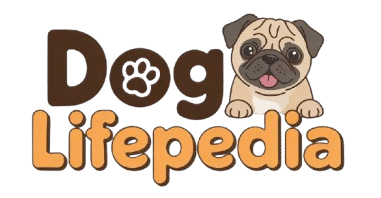
Beagle
Heena
May 7, 2025

The Beagle is a small to medium-sized scent hound known for its cheerful personality, keen nose, and expressive eyes. Originally bred in England for hunting hare, Beagles have evolved into loving family pets in the UK and USA, thanks to their friendly nature, compact size, and adaptability.
While Beagles are easy to fall in love with, they require attentive care and training due to their independent streak and high energy. Let’s explore what it takes to raise and live happily with a Beagle.
Breed Overview
-
Beagles typically come in two size categories:
- 13-inch Beagle: Weighs under 20 pounds
- 15-inch Beagle: Weighs 20–30 pounds
They have a short, dense coat, long ears, and a strong tail that’s often held upright. Their expression is soft and pleading—part of what makes them so popular.
Beagles are commonly found in families, suburban homes, and even rural farms across the UK and USA. Their size and easy-going nature also make them excellent choices for first-time dog owners.
- 13-inch Beagle: Weighs under 20 pounds
Breed Colors & Markings
Beagles are typically tri-color, with combinations of:
- Black
- White
- Tan
Other color variations include:
- Lemon & white
- Red & white
- Chocolate tri-color
- Blue tick or red tick
Their coats are short and weather-resistant, making grooming simple but shedding noticeable year-round.
Temperament and Communication
Beagles are social, outgoing, and alert. They love human companionship and are generally great with children and other dogs. However, they are vocal and known for:
- Baying (a deep howl)
- Howling when bored or left alone
- Whining or barking when excited
Communication is a big part of a Beagle’s personality. They’re ruled by their nose—once a scent catches their interest, they may ignore commands completely. This independence can make training a challenge but also adds to their charm.
What Do Beagles Eat?
In the UK and USA, Beagles are fed:
- Dry kibble
- Wet food or mixed diets
- High-protein formulas for active dogs
Their diets should include:
- Lean proteins (chicken, turkey, fish)
- Whole grains or grain-free alternatives
- Fruits and vegetables for vitamins
- Limited fat and calories, as Beagles are prone to obesity
Feed twice daily, and avoid overfeeding or too many treats. Slow-feeder bowls can help reduce rapid eating.
What to Expect When Caring for a Beagle
Health
Beagles are a generally healthy breed with a life expectancy of 12–15 years. Common health issues include:
- Ear infections (due to their long, floppy ears)
- Obesity
- Hypothyroidism
- Epilepsy
- Intervertebral disc disease (IVDD)
Routine vet visits, weight management, and ear cleaning are essential for preventing long-term health concerns.
Grooming
Beagles are low-maintenance when it comes to grooming:
- Brush weekly to remove dead hair
- Bathe every 1–2 months
- Clean ears weekly to avoid infections
- Trim nails monthly
- Brush teeth regularly
Their coat sheds lightly all year, with heavier shedding in the spring and fall.
Exercise
Beagles are active and need at least 60 minutes of daily exercise. Great activities include:
- Walks or jogs
- Scent games
- Interactive toys
- Hiking (on leash)
Off-leash play must be in a fenced area, as Beagles will follow scents and may not return when called. They benefit from a mix of physical and mental stimulation to avoid destructive boredom behaviors.
Training
Training a Beagle can be rewarding but requires patience. They are:
- Smart but stubborn
- Highly motivated by food rewards
- Easily distracted by smells
Start training early, focusing on:
- Recall and leash training
- Basic obedience (sit, stay, down)
- Crate and house training
Socialization is equally important—expose your Beagle to people, dogs, and varied environments while young.
Nutrition
Beagles need a balanced, controlled diet to prevent weight gain:
- Choose small breed or weight management formulas
- Add omega-3s for coat and joint health
- Monitor treats (no more than 10% of daily intake)
- Include joint supplements if aging or overweight
Fresh water should always be available, and avoid human food, especially anything high in fat or sugar.
Final Thoughts
The Beagle is a bundle of joy with a mischievous spirit and a heart full of love. In both the UK and USA, they are cherished for their family-friendly nature, resilience, and nose-driven curiosity. While their strong prey drive and vocal tendencies can be challenging, Beagles are loyal companions that adapt well to active, attentive households.
If you’re looking for a dog that thrives on scent-filled adventures, playtime, and affection, the Beagle may be your perfect match—just be ready for a little mischief along the way!

